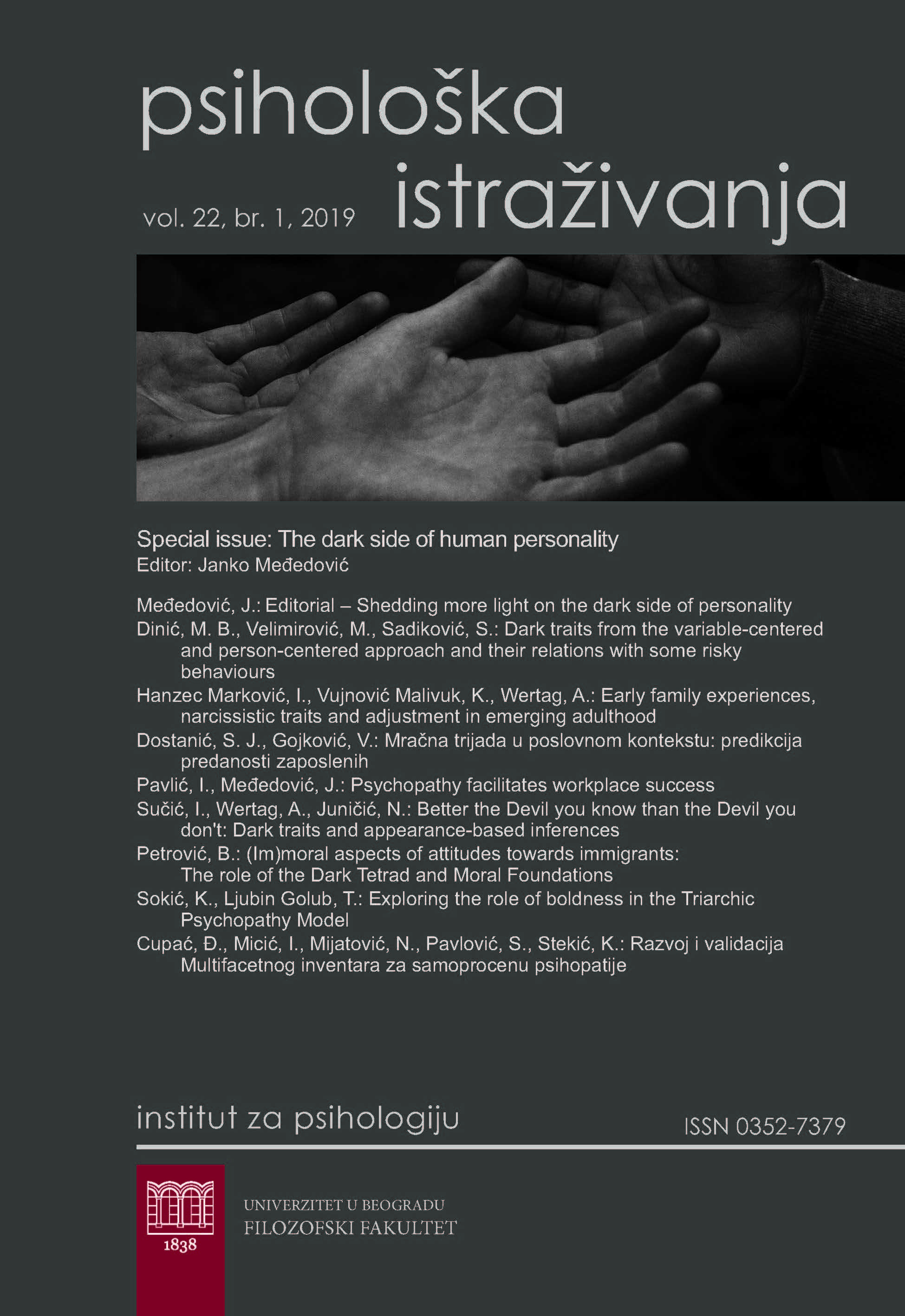Psychopathy facilitates workplace success
Sažetak
Psychopathy may be related to some adaptive outcomes in the workplace environment. This phenomenon is called corporate psychopathy and it is based on the assumption that a corporate environment positively selects for psychopathic features, especially in top management. We tested the hypothesis of positive relations between psychopathy traits and workplace success indicators in a sample of 212 working adults (69% females; Mage=33.55[SD=7.38]). We measured psychopathy using the Psychopathy Personality Traits Scale (analyses were performed on two empirically extracted factors from the items of this scale, labeled as Ruthless manipulation and Lack of empathy). We explored workplace success using four variables: 1) managerial vs. operational position in the company; 2) variation in monthly salary; 3) variation in the received bonus for the previous year's performance, and 4) self-reported success in performing job tasks. Correlation and regression analyses provided very similar results: Ruthless manipulation was more pronounced in individuals who were in managerial positions, and those who received a bonus for their performance; Lack of empathy was positively associated with bonus and self-reported performance success. Ruthless manipulation had positive zero-order correlation with monthly salary as well, but it did not have an independent contribution to the prediction of this criterion measure. The study results were congruent with the hypotheses: psychopathy was positively associated to various indicators of success in a workplace context. The findings can be interpreted using the concepts of corporate psychopathy and successful psychopathy in general.
Autori zadržavaju autorska prava nad objavljenim člancima, a izdavaču daju neekskluzivno pravo da članak objavi, da u slučaju daljeg korišćenja članka bude naveden kao njegov prvi izdavač, kao i da distribuira članak u svim oblicima i medijima. Objavljeni članci distribuiraju se u skladu sa licencom Creative Commons Autorstvo – Deliti pod istim uslovima 4.0 International (CC BY-SA) . Dopušteno je da se delo kopira i distribuira u svim medijima i formatima, da se prerađuje, menja i nadograđuje u bilo koje svrhe, uključujući i komercijalne, pod uslovom da se na pravilan način citiraju njegovi prvobitni autori, postavi link ka originalnoj licenci, naznači da li je delo izmenjeno i da se novo delo objavi pod istom licencom kao i
originalno. Autorima je dozvoljeno da objavljenu verziju rada deponuju u institucionalni ili tematski repozitorijum ili da je objave na ličnim veb stranicama (uključujući i profile na društvenim mrežama, kao što su ResearchGate, Academia.edu, itd.), na sajtu institucije u kojoj su zaposleni, u bilo koje vreme nakon objavljivanja u časopisu, uz adekvatno referisanje.

